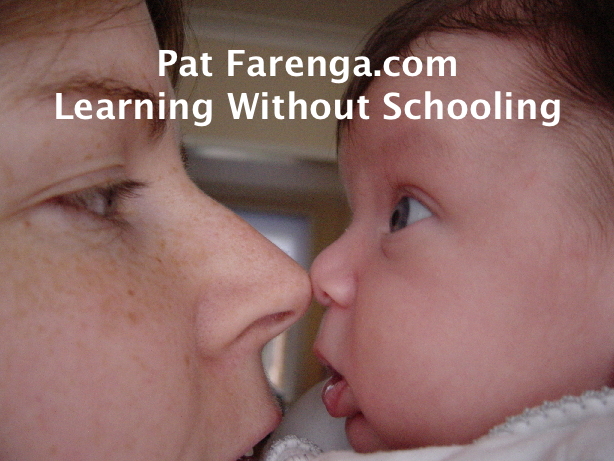Child-driven Education
 Thursday, September 16, 2010 at 1:54PM
Thursday, September 16, 2010 at 1:54PM In 2008, in an earlier version of this blog, I wrote about the research of Sugata Mitra whose "Hole in the Wall" experiments have shown, “in the absence of supervision or formal teaching, children can teach themselves and each other, if they're motivated by curiosity.” Dr. Mitra has a new TED video (see below) where he explores this concept in more detail by conducting further experiments using children, computers, and the Internet.
Mitra interviewed Arthur C. Clarke, the famous science fiction author, who says to Mitra in the video, “When you have interest, you have education.” This pretty much sums up Mitra's position about learning.
Naturally all of this sounds incredibly familiar to unschoolers and others who support self-directed learning, but Dr. Mitra and the audience he reaches seem genuinely surprised and delighted by these findings. Indeed, I felt as if I were watching a parallel universe emerge as Mitra discussed his concept of creating SOLEs, self-organized learning environments and enlisting British grandmothers to read and speak English with school children in other countries by using an Internet connection. Echoes from the work of Paul Goodman, John Holt, and Ivan Illich abound in Mitra's findings, but the connections are not drawn in either of these videos.
Mitra's work is focused on technology and children, but as unschoolers and alternative educators such as A.S. Neil have shown for generations, children can teach themselves and others far more than we believe they can, if provided with access, time, and kind, not overbearing, adult support. I really like Mitra's attitude about how the adults need to get out of the way and let the kids have ample time and equipment to self-organize their learning.
As can be seen in these videos, the technology Mitra uses is not the sort of expensive computer learning labs our schools would insist on building before implementing any such program. The consumer off-the-shelf products Mitra provides the students with in these videos contain as much involvement and content as any custom-designed, age-appropriate, aligned-to-standardized-testing computer program. In fact, since the tools the kids are using are the same that adults use—Google, common Internet browsers—they probably have even more appeal to children than programs designed just for use in the classroom.
At the very least, Mitra's work can be cited by unschoolers as further support for the self-directed learning their children do. I hope at some point Dr. Mitra will expand his inquiries to consider other places and ways that children self-organize their learning besides using technology to do so. For instance, in addition to those authors mentioned earlier, examination of the work of Bill Ellis, who was inspired by E.F. Shumacher; Ron Miller's work about alternative schools, particularly The Self-Organizing Revolution: Common Principles of the Educational Alternatives Movement (Psychology Press, 2008); Roland Meighan's The Next Learning System: and why home-schoolers are trailblazers (Education Heretics Press, 1997), and the growing literature from unschoolers about how their children learn from and about the world without formal instruction all support Mitra's ideas about teaching and learning. There are other books and studies that can be cited, such as Letter to a Teacher from the Schoolboys of Barbiana, wherein Italian children who were flunked out of school in sixth grade banded together and taught themselves what they needed and wanted to learn, but I'll stop here.
Mitra ends his talk with a slide that displays these words:
Speculation: Education is a self organizing system (sic), where learning is an emergent phenomenon… It will take five years and under a million dollars to prove this experimentally.
Mitra seeks to prove, experimentally, something that some parents, teachers, and children have long known and leveraged: that children have much greater abilities to learn and grow than our current conception of schooling can even dream of or allow. I wish him well in his experiment, but there is no reason for anyone to wait for him to "prove" this before it can be used by people.
As homeschoolers and unschoolers we know that no matter how much research is shown to support our position, the conventional wisdom of the day usually trumps it. So even if Mitra can prove his speculation we are not going to see school officials stop harrassing parents and teachers who aren't using conventional school techniques. But that's no reason for us to stop helping our children learn in their own ways; indeed, Mitra's work, even without such proof, is an inspiration for us to continue doing what we've been doing and saying for years.

